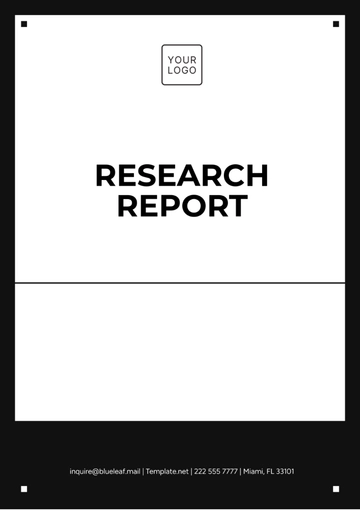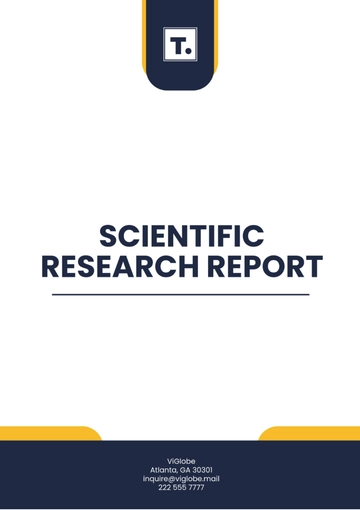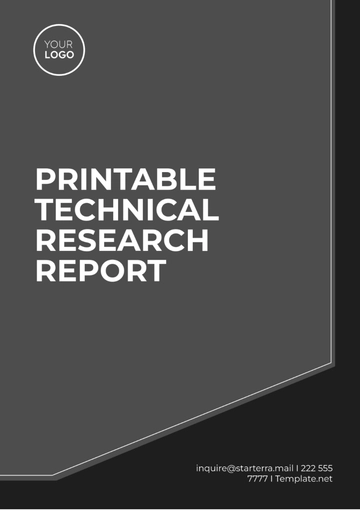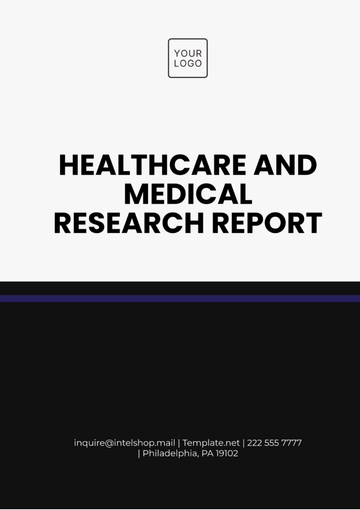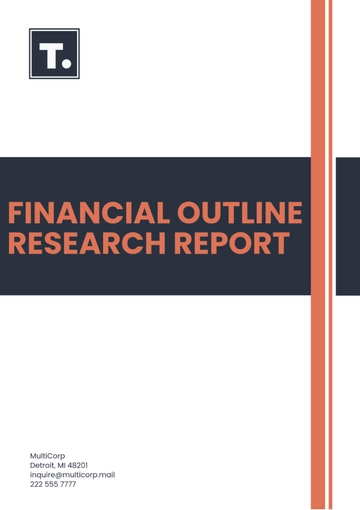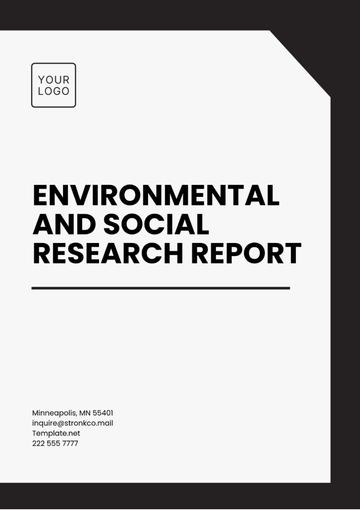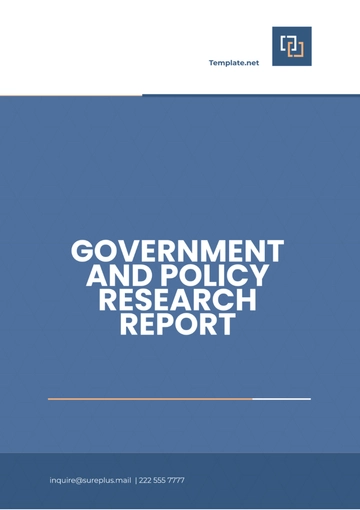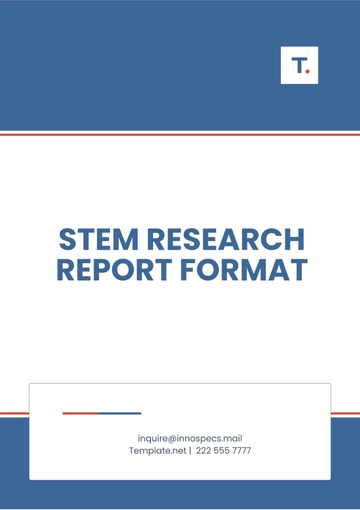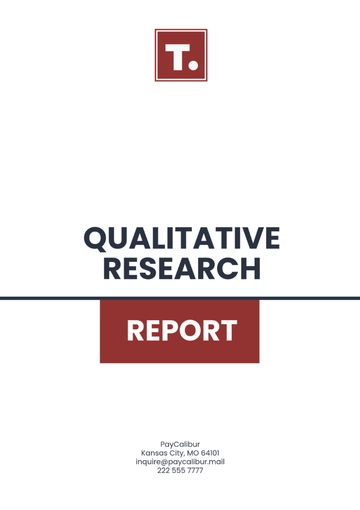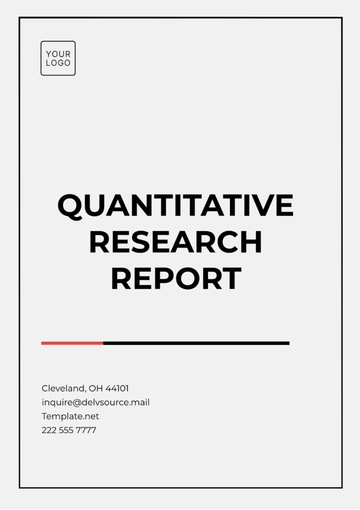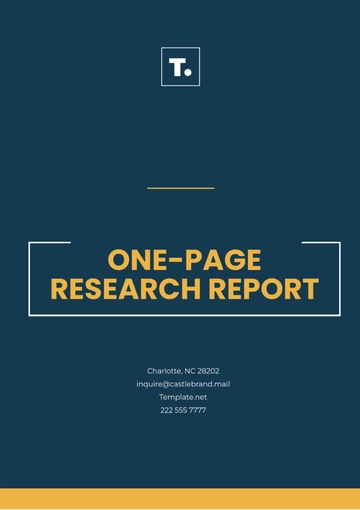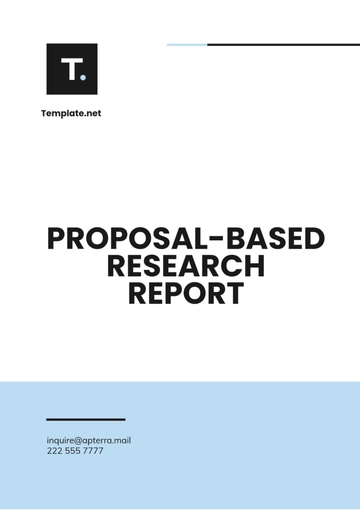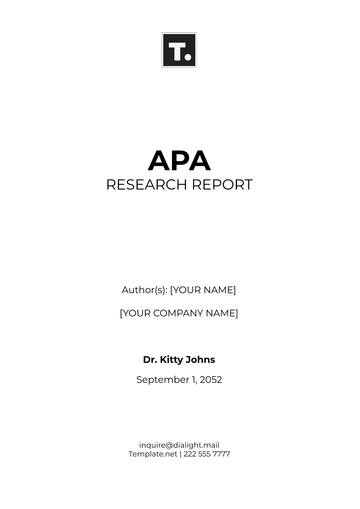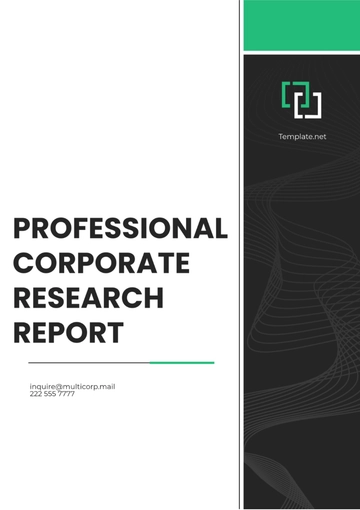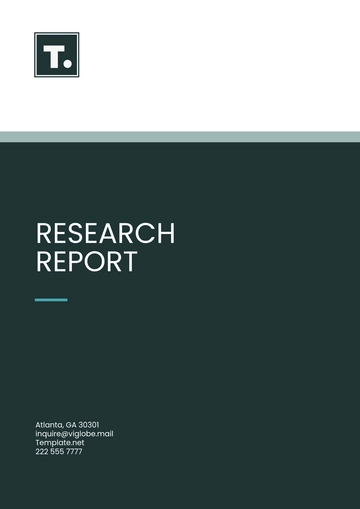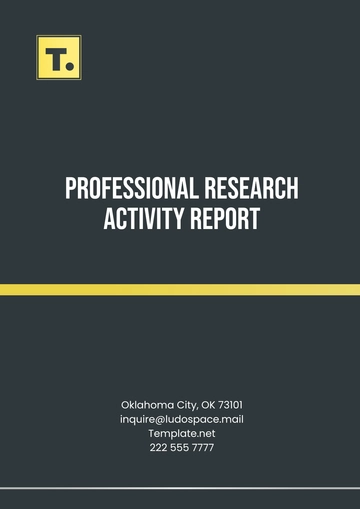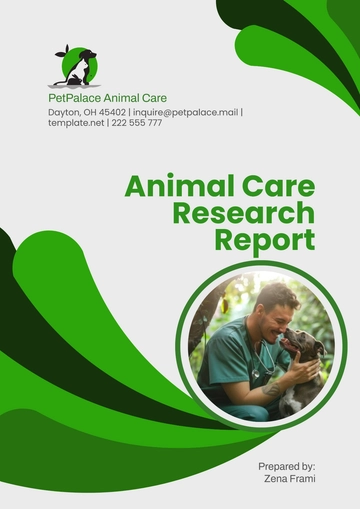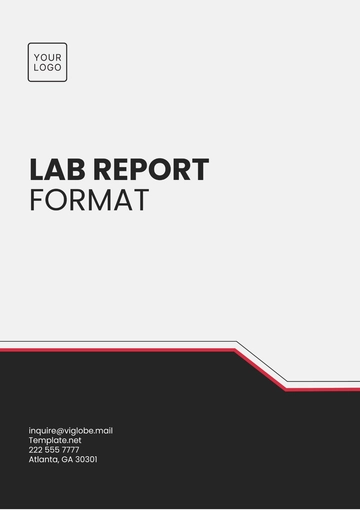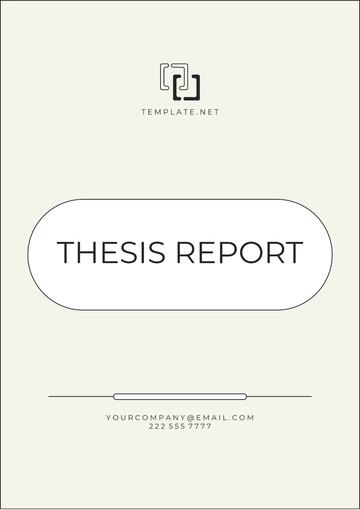Free Safety Research Report

I. Executive Summary
This report aims to identify potential hazards, assess current safety protocols, and propose recommendations for risk mitigation across various departments. Utilizing on-site inspections, employee interviews, and data analysis, our approach included a risk assessment matrix and benchmarking against industry best practices. This methodology ensured a holistic evaluation of our company's safety performance.
II. Introduction
A. Background
Workplace safety is a paramount concern for our company, and as part of our ongoing commitment to the well-being of our employees, we undertook a comprehensive Safety Research Report. This initiative was prompted by the recognition of the evolving nature of workplace hazards and the need for proactive measures to maintain a secure and healthy working environment.
B. Objectives
The primary objectives of this safety research were to systematically assess the effectiveness of our existing health and safety measures, identify potential areas of improvement, and develop actionable recommendations to enhance our safety protocols. The research aimed to encompass a wide spectrum of factors, including incident analysis, ergonomic considerations, emergency response capabilities, chemical management practices, and the effectiveness of our employee training programs.
III. Methodology
A. Multifaceted Approach
To ensure a thorough and accurate evaluation, a multifaceted methodology was employed. This approach included on-site inspections conducted by certified safety professionals, one-on-one interviews with employees from various departments, and a meticulous analysis of historical incident data.
B. Risk Assessment Matrix
A key component of our methodology was the use of a risk assessment matrix. This matrix allowed us to categorize identified hazards based on their severity and likelihood, providing a quantitative basis for prioritizing corrective actions. Benchmarking against industry best practices and regulatory requirements ensured that our assessments were aligned with recognized standards.
C. Data Analysis
Data analysis played a crucial role in our research, enabling us to identify patterns, trends, and areas of concern. This involved a detailed examination of incident reports, injury records, and near-miss data. Additionally, employee training records and feedback were analyzed to gauge the effectiveness of our current training programs.
D. Industry Benchmarking
To contextualize our findings, we conducted thorough benchmarking against industry standards. This allowed us to identify emerging best practices, anticipate future challenges, and align our safety measures with the latest advancements in workplace safety.
IV. Findings
A. Incident Analysis
The examination of past incidents revealed recurring patterns, emphasizing the importance of proactive measures. Incidents were categorized based on severity, frequency, and root causes. A notable observation was the concentration of incidents in specific work areas, guiding our focus toward targeted preventive measures.
B. Workstation Evaluations
Ergonomic assessments unveiled opportunities to enhance employee comfort and reduce the risk of musculoskeletal issues. Analysis included workstation design, chair ergonomics, and employee work habits. Recommendations for adjustable workstations, ergonomic training, and regular assessments aim to improve overall employee well-being.
C. Emergency Response
Simulation exercises exposed areas for improvement in emergency response protocols. Coordination issues, communication gaps, and response times were scrutinized. Our analysis led to recommendations for refined emergency response procedures, regular drills, and enhanced communication channels to ensure a swift and coordinated reaction in unforeseen circumstances.
D. Chemical Management
An in-depth examination of chemical storage and handling practices highlighted opportunities for improvement. Focus areas included labeling accuracy, containment measures, and employee awareness. Recommendations encompass revised storage protocols, enhanced labeling, and training programs to fortify chemical safety across the company.
E. Employee Training
Discrepancies in safety training completion rates were identified, indicating potential gaps in the current training programs. Our analysis encompassed training content, delivery methods, and employee engagement. The report recommends targeted training modules, regular assessments, and innovative approaches to ensure comprehensive and effective safety education.
V. Analysis
A. Strengths and Weaknesses
Our analysis recognizes commendable adherence to many safety standards and protocols. However, it also underscores specific weaknesses that require immediate attention. The risk assessment matrix served as a tool to prioritize identified hazards based on their potential impact, guiding our focus toward areas with the highest risk.
B. Cultural Assessment
A cultural assessment revealed varying degrees of safety consciousness among different departments. Departments with robust safety cultures were identified as models for improvement in others. This analysis is integral to tailoring our recommendations to the specific needs and challenges within each department, fostering a consistent and company-wide commitment to safety.
C. Regulatory Compliance
While our company complies with existing safety regulations, a detailed analysis of regulatory changes and emerging standards highlighted the need for ongoing vigilance. Recommendations include the establishment of a dedicated regulatory compliance team to ensure timely updates, audits, and adjustments to our safety protocols in line with evolving regulatory landscapes.
VI. Recommendations
A. Incident Prevention Measures
Proactive Reporting System
Implement a proactive incident reporting system to encourage employees to report potential hazards and near-miss incidents promptly. This system should provide a user-friendly interface and assure anonymity to foster open communication.
Regular Safety Briefings
Conduct regular safety briefings at the departmental level. These briefings will address common incident patterns identified during the research, providing targeted guidance on preventive measures and promoting a culture of safety awareness.
B. Ergonomic Enhancements
Adjustable Workstations
Introduce adjustable workstations to accommodate diverse employee needs. This includes ergonomic chairs, sit-stand desks, and other ergonomic accessories. The implementation will be phased, starting with high-risk work areas.
Ergonomic Training Programs
Develop and implement comprehensive ergonomic training programs for all employees. These programs will include guidance on proper workstation setup, posture, and regular stretching exercises to minimize musculoskeletal strain.
C. Emergency Response Enhancement
Refined Protocols
Refine emergency response protocols based on the findings from simulation exercises. This includes clarifying roles, improving communication channels, and establishing clear escalation procedures. The updated protocols will be communicated through training sessions and drills.
Regular Drills
Conduct regular emergency response drills across all departments. These drills will simulate various scenarios to ensure employees are familiar with the procedures and can respond effectively in high-pressure situations.
D. Chemical Safety Improvements
Revised Storage Procedures
Revise chemical storage procedures to ensure proper labeling, segregation, and containment. Implement a color-coded labeling system for easy identification of hazardous materials.
Enhanced Training Programs
Develop and implement training programs on chemical safety for all employees handling or working in proximity to chemicals. This includes proper handling, storage, and emergency response procedures.
E. Training Program Enhancement
Targeted Modules
Develop targeted training modules based on identified gaps in safety knowledge. These modules will be tailored to the specific needs of different departments, ensuring relevance and engagement.
Regular Assessments
Implement regular assessments to evaluate the effectiveness of training programs. This includes quizzes, practical exercises, and feedback sessions to ensure that employees retain and apply safety knowledge in their daily tasks.
F. Implementation Timeline
A phased implementation approach will be adopted for the recommendations outlined above. The timeline will be communicated to all stakeholders, with periodic progress updates which is outlined in the table below:
Phase | Recommendation Area | Action Item | Start Date | Completion Date |
1 | Incident Prevention Measures | Implement Proactive Reporting System | [Month] | [Month + 2] |
The implementation timeline outlined above is designed to guide our company through a phased approach to enhance workplace health and safety. Each phase corresponds to specific action items derived from the comprehensive findings and recommendations detailed in the Safety Research Report.
In the initial phase, we prioritize the establishment of a Proactive Reporting System for incidents, fostering a culture of open communication. Concurrently, safety briefings will be conducted to address common incident patterns and instill a heightened awareness of preventive measures among our workforce. Subsequent phases focus on targeted enhancements, such as the introduction of Adjustable Workstations and Ergonomic Training Programs to address musculoskeletal concerns, and the refinement of Emergency Response Protocols with associated drills to ensure a swift and coordinated response.
The latter stages of the implementation plan emphasize the importance of chemical safety, involving the revision of storage procedures and the launch of enhanced training programs. Simultaneously, our Training Program Enhancement phase introduces targeted modules and regular assessments to ensure ongoing education and competency evaluation.
VII. Monitoring and Evaluation
To ensure the effectiveness of the implemented recommendations and the overall success of our enhanced health and safety measures, it is imperative to establish a robust system for monitoring and evaluation. This key components of our monitoring and evaluation plan are the following:
A. Key Performance Indicators (KPIs)
Incident Reduction
Track the number of reported incidents over time, aiming for a consistent reduction to demonstrate the impact of the Proactive Reporting System and safety briefings.
Employee Feedback
Gather regular feedback from employees through surveys and focus groups to gauge their perception of the changes and identify areas for further improvement.
Ergonomic Compliance
Monitor the adoption of adjustable workstations and participation in ergonomic training programs, ensuring widespread compliance with the new measures.
Emergency Response Effectiveness
Evaluate the effectiveness of emergency response protocols through scheduled drills and simulations, measuring response times and coordination.
Chemical Safety Adherence
Regularly audit chemical storage areas, assess labeling accuracy, and conduct employee assessments to ensure adherence to the revised chemical safety procedures.
Training Program Efficacy
Assess the impact of the enhanced training programs by tracking completion rates, quiz scores, and employee performance in real-world scenarios.
B. Continuous Improvement
Feedback Loop
Establish a continuous feedback loop for incident reporting, employee suggestions, and lessons learned from emergency response drills. Use this information to refine existing protocols.
Regulatory Compliance Audits
Conduct regular audits to ensure ongoing compliance with evolving safety regulations, promptly addressing any gaps or necessary adjustments.
Periodic Safety Audits
Implement periodic safety audits across departments to identify emerging risks, assess the effectiveness of implemented measures, and make necessary adjustments.
C. Reporting and Communication
Regular Reports
Generate and disseminate regular reports detailing the progress of each implemented measure, KPI results, and identified areas for improvement.
Stakeholder Communication
Maintain open communication with all stakeholders, including employees, management, and regulatory bodies, providing updates on safety initiatives and addressing any concerns promptly.
D. Timeline for Evaluation
The monitoring and evaluation process will be ongoing, with formal evaluations scheduled at regular intervals. The initial comprehensive evaluation is slated for six months after the full implementation of the recommendations, allowing sufficient time for the company culture to adapt and for changes to take effect. Subsequent evaluations will occur annually, ensuring a continuous improvement cycle that aligns with the dynamic nature of workplace health and safety.
VII. Conclusion
This Safety Research Report underscores our commitment to cultivating a workplace culture centered on health and safety. The proposed proactive measures represent a strategic response to identified risks, aiming to fortify our company's resilience and ensure the well-being of our employees. As we move into implementation, it is paramount to recognize that safety is an ongoing journey.
- 100% Customizable, free editor
- Access 1 Million+ Templates, photo’s & graphics
- Download or share as a template
- Click and replace photos, graphics, text, backgrounds
- Resize, crop, AI write & more
- Access advanced editor
Introducing the Safety Research Report Template from Template.net! Crafted with precision and designed for convenience, this editable and customizable template streamlines your safety research process effortlessly. With our innovative Ai Editor Tool, refine your reports seamlessly. Elevate your safety documentation game with ease and efficiency. Get yours today!
You may also like
- Sales Report
- Daily Report
- Project Report
- Business Report
- Weekly Report
- Incident Report
- Annual Report
- Report Layout
- Report Design
- Progress Report
- Marketing Report
- Company Report
- Monthly Report
- Audit Report
- Status Report
- School Report
- Reports Hr
- Management Report
- Project Status Report
- Handover Report
- Health And Safety Report
- Restaurant Report
- Construction Report
- Research Report
- Evaluation Report
- Investigation Report
- Employee Report
- Advertising Report
- Weekly Status Report
- Project Management Report
- Finance Report
- Service Report
- Technical Report
- Meeting Report
- Quarterly Report
- Inspection Report
- Medical Report
- Test Report
- Summary Report
- Inventory Report
- Valuation Report
- Operations Report
- Payroll Report
- Training Report
- Job Report
- Case Report
- Performance Report
- Board Report
- Internal Audit Report
- Student Report
- Monthly Management Report
- Small Business Report
- Accident Report
- Call Center Report
- Activity Report
- IT and Software Report
- Internship Report
- Visit Report
- Product Report
- Book Report
- Property Report
- Recruitment Report
- University Report
- Event Report
- SEO Report
- Conference Report
- Narrative Report
- Nursing Home Report
- Preschool Report
- Call Report
- Customer Report
- Employee Incident Report
- Accomplishment Report
- Social Media Report
- Work From Home Report
- Security Report
- Damage Report
- Quality Report
- Internal Report
- Nurse Report
- Real Estate Report
- Hotel Report
- Equipment Report
- Credit Report
- Field Report
- Non Profit Report
- Maintenance Report
- News Report
- Survey Report
- Executive Report
- Law Firm Report
- Advertising Agency Report
- Interior Design Report
- Travel Agency Report
- Stock Report
- Salon Report
- Bug Report
- Workplace Report
- Action Report
- Investor Report
- Cleaning Services Report
- Consulting Report
- Freelancer Report
- Site Visit Report
- Trip Report
- Classroom Observation Report
- Vehicle Report
- Final Report
- Software Report
